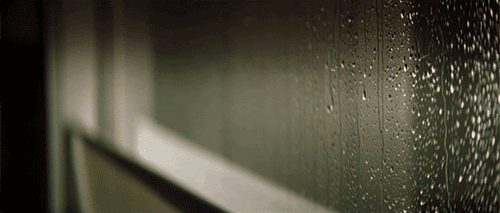Damp, mould and condensation
There are different types of dampness that may affect your home. The information on this page should help you to identify the type of dampness that you may be affected by. Condensation can be the biggest cause of damp in homes. Condensation may be made worse if the other types of dampness are present.
This information and advice is provided to help you identify the various types of dampness and reduce condensation as well as treating the mould growth often associated with it.

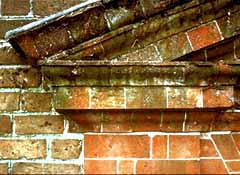
Types of dampness
There are four main types of dampness that could affect your home. It is important to understand the difference between them so that you can effectively treat the problem.
Rising dampness
Rising dampness is caused by water rising from the ground into the home. The water gets through or around a defective damp proof course (DPC) or passes through the natural brickwork if the property was built without a DPC. A DPC is a horizontal layer of waterproof material put in the walls of a building just above ground level. It stops moisture rising through the walls. Rising damp will only affect basements and ground floor rooms. It will normally rise no more than 36 inches above ground level (900mm) and usually leaves a ‘tide mark’ low down on the wall. You may also notice white salts on the affected areas.
Rising damp will be present all year round but is more noticeable in winter. If left untreated it may cause wall plaster to crumble and paper to lift in the affected area.
It is worth checking that materials, such as soil or building materials, are not left against the outside of walls as this may allow the dampness to bypass (bridge) the DPC and cause dampness in an otherwise sound wall. Ideally the DPC will be a minimum of 6 inches (150mm) above ground level.
If the DPC has been bypassed it is a simple measure to remove the materials as this will allow the walls to dry out, otherwise the services of a reputable damp proofing specialist should be employed. Tenants should ask their landlord to investigate further.
Mould will rarely be seen where there is rising damp (and then only in the early stages). This is because rising dampness carries with it salts that prevent the growth of mould.
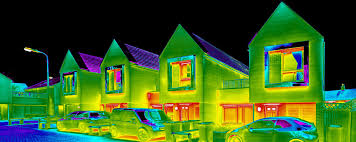
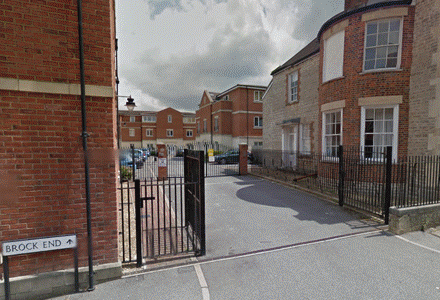
Penetrating dampness
This type of dampness will only be found on external walls or, in the case of roof leaks, on ceilings. It only appears because of a defect in the structure of the home, such as missing pointing to the brickwork, missing roof tiles, loose flashing or leaking gutters. These defects then allow water to pass from the outside to the inner surfaces. Penetrating dampness is far more noticeable following a period of rainfall and will normally appear as a well-defined ‘damp-patch’ which looks and feels damp to the touch. “Tide marks” will be left, even in periods of dry weather.
Mould may be seen on areas of penetrating dampness. Mould could however be absent as the dampness contains salts picked up when passing through the wall, which may prevent the growth of mould.
Where defects have been identified it is likely that a reputable builder will need to be employed to carry out repairs. Tenants should ask their landlord to investigate further.
Defective plumbing
Leaks from water and waste pipes, especially in bathrooms and kitchens, are relatively common. They can affect both external and internal walls and ceilings. The affected area looks and feels damp to the touch and stays damp whatever the weather conditions outside. An examination of the water and waste pipes in the kitchen and bathroom and the seals around the bath, shower and sinks will usually find the problem. In cases when leaks are not attended to, rot may become established in wooden joists and floor boards leading to a risk of collapse in severe cases.
Mould may be seen with this type of dampness and even fungi are not uncommon if the defects are not addressed.
Leaks should be attended to without delay by a reputable tradesperson, tenants should ask their landlord to investigate further.
Condensation and mould growth
This is by far the most common cause of dampness, resulting in a large number of enquiries and complaints received by the Council. Condensation is caused by water vapour or moisture in the air, inside the dwelling, coming into contact with a colder surface, such as a window or wall. The drop in temperature causes water to form on the surface. This water may then soak into the wallpaper, paintwork or plasterwork. Mould spores are invisible to the naked eye but are in the air all around us all of the time and will quickly grow on surfaces where condensation has formed into a visible covering.
Condensation mainly occurs during the colder months, whether it is rainy or dry outside. It is usually found in the corners of rooms, north facing walls and on or near windows. It is also found in areas of little air circulation such as behind wardrobes and beds, especially when they are pushed up against external walls.
Mould is almost always seen with this type of dampness and is normally the first symptom to cause concern.
All homes are affected by condensation at some point however certain activities can increase the problem and good practices can eliminate this from becoming a problem. Condensation and mould growth are often due to habits and lifestyles that can be simply reduced or remedied by the householder. Cooking, washing, drying clothes indoors, even breathing, all produce water vapour that can only be seen when tiny drops of water (condensation) appear on colder surfaces such as walls, windows, ceilings or mirrors and often unseen on clothing, shoes and furniture.
The amount of condensation in a home depends upon a number of things, most importantly:
- how much water vapour is produced by the actions of its residents
- how cold or warm the property is
- how much air circulation (ventilation) there is
- how well the property has been insulated
Simply turning up the heating will not sort out the problem, this may only temporarily reduce condensation. All factors may need to be looked at to reduce the problem. The first sign of a problem is often water vapour condensing on windows and other cold surfaces, which then takes a long time to disappear. This allows the surfaces to become damp resulting in mould growing on these damp areas.
Mould spores are invisible to the human eye and are always present in the atmosphere both inside and outside of homes. They only become noticeable when they land on a surface upon which they can grow and then multiply.
By dealing with the causes of condensation you will automatically deal with the problem of mould.
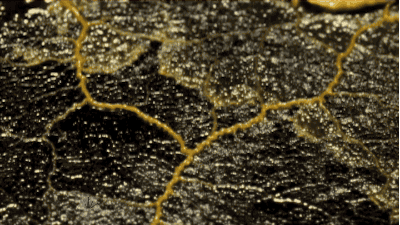
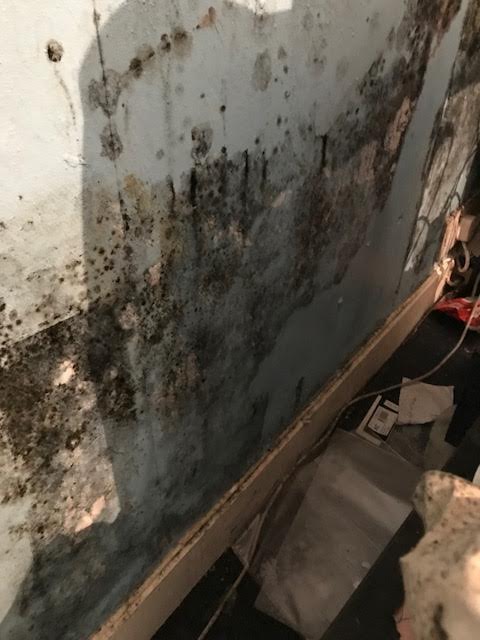
Steps to take to reduce condensation and mould growth
Following these steps can help to reduce the amount of condensation and mould growth in your home.
Produce less moisture
Ordinary daily activities produce a lot of moisture, to reduce this:
- dry clothes outdoors if possible. Avoid drying clothes indoors or, if you have to, dry them on a clothes airer in the bathroom with the door closed and either an extractor fan on or with a window open
- ventilate tumble driers to the outside (never into the home)
- cover pans when cooking and turn down to a simmer when they boil.
- do not use paraffin or liquid petroleum (bottled) gas heaters as they produce large amounts of water vapour
- run cold water in to a bath before the hot
Remove excess moisture
- wipe the windows and window sills of your home every morning if water has formed
- open windows and turn extractor fans on before running baths and using showers. Ideally extractor fans will be linked to a humidistat that will automatically operate when moisture in the air is high or to the light switch with an overrun when the light is switched off
- open curtains to allow for better ventilation and for natural light and heat to enter
- clear window sills of clutter that will restrict opening the windows
- leave space between the back of furniture and cold walls. Only place furniture against internal walls if possible
- ventilate cupboards and wardrobes and avoid overfilling them as this prevents air circulating
- do not completely block chimneys and flues, fit with an air vent to provide constant ventilation
Heat your home adequately.
In cold weather, the best way to keep rooms warm and avoid condensation is to keep low background heat on all day rather than short bursts of high heat when you are in the house. Do not be tempted to turn off the radiators in unused rooms as this could give rise to dampness and mould growth that you will be unaware of. Good heating controls on your radiators, room thermostats and a timer will help control the heating throughout your house and manage costs.
- insulate and draught-proof. This will help keep your home warm and save money on your heating bills. Insulate the loft up to a depth of 270 mm
- consider secondary or double glazing
- consider cavity wall insulation
- draught-proof windows and external doors. When draught proofing do not block permanent ventilators or rooms requiring ventilation.
Dealing with mould
Mould can grow on walls, ceilings, furnishings and even on clothes and toys, which can be depressing and expensive.
To kill and remove the mould:
- carefully remove mould with a damp cloth and throw away after. Do not brush mould as this releases spores into the air
- wipe down affected areas using a fungicidal wash or diluted bleach, following manufacturer’s instructions
- after treatment, redecorate using a fungicidal paint or wall paper paste. Do not paint over using an ordinary paint
- dry clean or wash clothes affected by mould and shampoo carpets.
- dealing with condensation is not always easy. Only carrying out one or two of the above steps may not solve your problem. You need to do as many as possible every day, so that they become part of your habits and lifestyle.

Common household moisture producing activities
Our everyday activities add extra moisture to the air inside our homes:
- even our breathing adds some moisture. One person asleep adds half a pint of water to the air overnight and an active person adds twice that rate during the day. 2 people at home for 16 hours can add 3 pints
- a bath or shower can add 2 pints
- drying clothes indoors can add 9 pints
- cooking and use of a kettle can add 6 pints
- washing dishes can add 2 pints
- a bottled gas heater (8 hours use) can add 4 pints
Warmth versus ventilation
Striking the right balance between warmth and ventilation is important and can be very effective. By opening windows or ventilating your home it may appear that you are losing some heat, but what you are actually doing is allowing warm moisture-laden air to escape and allowing dry air to enter your home.
Many people who have double-glazing installed experience problems with condensation and mould growth that they never had with their old draughty window frames. This is because all the natural draughts around the poorly fitted windows have been sealed. However, by using trickle vents or opening windows slightly, then the necessary ventilation level can be achieved.
Ventilation needs to be provided for an appropriate period of time depending on how much water that you produce in the home and on weather conditions. On a warm dry day ventilation should be done to the maximum, on a cold wet day ventilation may not be of any help except in a bathroom or kitchen where most water is produced. It should not be necessary to leave all windows open all day.





